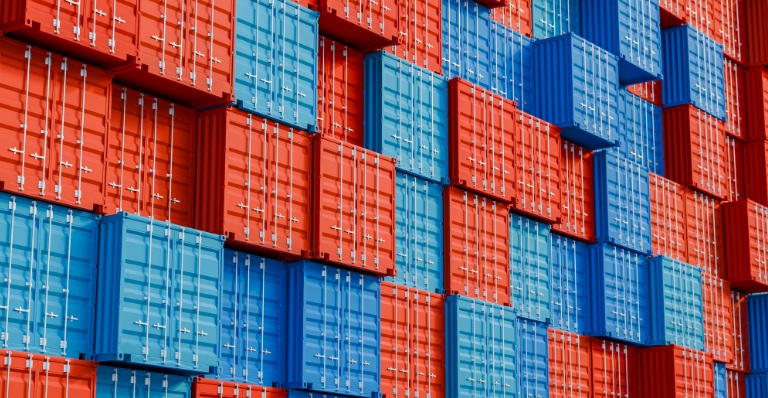It was the famous quipster Yogi Berra who advised: “When you come to a fork in the road, take it.” We laugh, conclude that it’s impossible, and move on. Not so fast: It seems we’re doing that very thing in real time. Faced with waves of COVID-19 infections, we opted for lockdowns, which worked, but sadly, only temporarily. While it did buy time for vaccinations to catch up, we’re not there yet. Faced yet again with rising infections, this time the economy is charging on, as is the race to herd immunity. We’re taking the fork in the road, but what does this mean for the world economy?
Current growth is looking resilient. Consumers are in a good mood all over the developed world, and businesses are just as upbeat. And with good reason: Across our planet, business is brisk at the till. Pan-European retail sales are up 6% from pre-pandemic levels, and it only gets better from there: Canada is up 8% and the United States, by a whopping 17%. Global exports are also fully recovered. They are up 1% from pre-pandemic levels in advanced economies, and by a stunning 21% in emerging economies to bring the world up 7% in the same timeframe. Add in vast public stimulus spending, easy liquidity and business investment, and you’d think we were sort of back to normal.
Inflation numbers would sort of agree. Upstream business costs are on a tear, accelerating in the U.S. from less than 1% to more than 8% year-to-year between December and August, and in as many months, Canada started at the same point and is now up more than 15% as of July. Well, these are the costs that get passed on to consumers, so if it’s a gauge of what’s to come, the recent consumer price index numbers for the U.S. at 5.2% and for Canada at just under 4%, both well ahead of the 2% target, may be with us for a while. While inciting fear, this increase in prices is one of the strongest indications that growth is robust.
Will it continue? Great question. Most of the developed world entered the pandemic with lots of growth potential. Sluggish growth for years preceding the pandemic resulted in significant pent-up demand. With a vast reduction in things to spend on during lockdown moments, and vast numbers of people still pulling down a full salary, savings soared, and bank accounts bulged. Excess readily available cash in Canada totals about 13% of gross domestic product (GDP), while in the U.S. it’s more than 17% and Western Europe is similar. It represents a wall of cash that for about 50% of world GDP could wash into the economy overnight, given the opportunity. It’s an enormous storehouse of pent-up pressure, let alone the pent-up demand that preceded it.
You should also check out
With growing risks, Canadian companies face new challenges. EDC’s Global Economic Outlook offers insights to help you make better business decisions.
With this as a backdrop, Export Development Canada’s autumn 2021 Global Economic Outlook is forecasting a world economy at 6% growth this year and a still-hot 5.5% in 2022. Emerging markets will collectively accelerate from a 6.3% recovery this year to 6.4% next. Advanced economies will grow well ahead of their collective long-term trend, up by 5.5% in 2021 and followed by 4.2% in 2022. After a 4.9% performance this year, Canada will be ahead of the advanced economy average at 4.4% in 2022.
Supply chain and shipping shortages, all over the news at the moment, are frictional, not structural—that is, the capacity is there, it’s just a matter of getting it to where it needs to be. As such, we expect that movement of goods and services will be more fluid as we move through 2022. Consequently, price growth should moderate. Our forecast calls for oil and gas prices to moderate over the coming two years, and for copper prices to remain relatively high, but down from the 2021 average. The same goes for wood product prices, which are down sharply from peak levels, but remain a good deal higher than average.
All the inflation talk has created buzz as to when central banks will begin tightening. The Bank of Canada was first to announce an immediate tapering of its bond purchase program, with the European Central Bank (ECB) following weeks later. The U.S. Federal Reserve board is more reserved, signalling that it may begin tapering late this year. Interest rates will be next—the Bank of Canada is expected to begin modest rate-tightening in late 2022, with the Fed holding off until 2023, and the ECB stalling until 2024.
The forecast is far from risk-free. Failure to contain the coronavirus conclusively could result in further lockdowns, either local or—it pains me to say it—global, which could radically alter our projections for next year. Inflation could lead to central banks tightening more than the economy can handle, putting the brakes on growth. Large increases in public debt could be another bugbear. And there’s also a fair chance that growth could overdo it—initially a good news story—but against current constraints, not without a potential backlash.
The bottom line?
When we reach an unmarked fork in the road, most of us pause. Global competition and prior activity lost to the pandemic suggest that’s not an option. Embracing the growth and developing viable COVID-19 coping strategies seem to be the winning dual approach to the charge back to a fully functioning economy. So, grab that fork and go for it!
This commentary is presented for informational purposes only. It’s not intended to be a comprehensive or detailed statement on any subject and no representations or warranties, express or implied, are made as to its accuracy, timeliness or completeness. Nothing in this commentary is intended to provide financial, legal, accounting or tax advice nor should it be relied upon. EDC nor the author is liable whatsoever for any loss or damage caused by, or resulting from, any use of or any inaccuracies, errors or omissions in the information provided.







